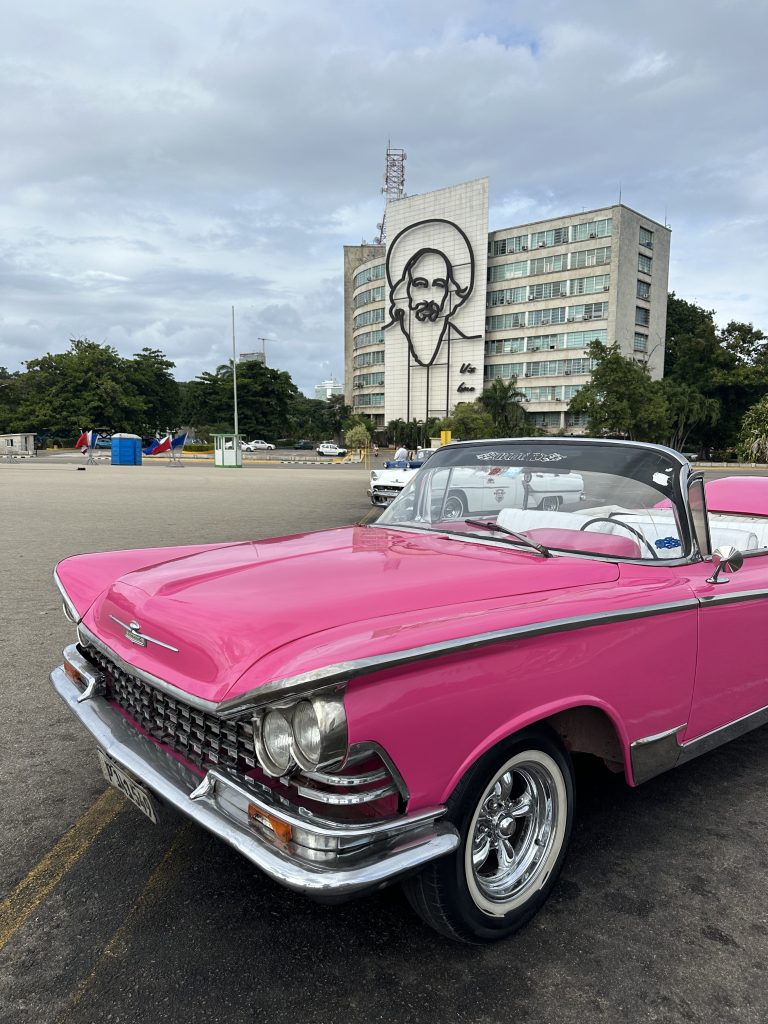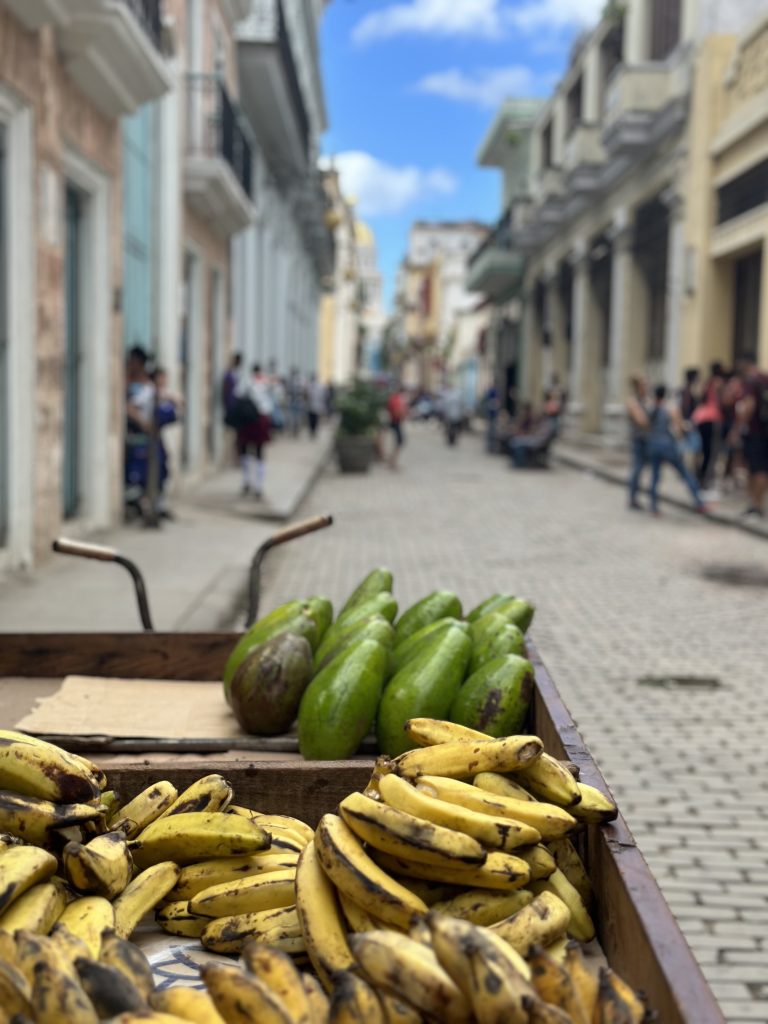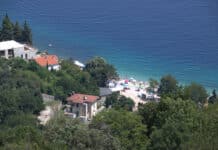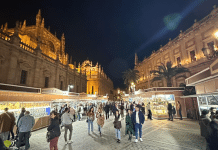For many, there is a fascination and a mystery about the Caribbean Island of Cuba, thus earning its place on numerous bucket lists, not least mine. First-time visitors are not entirely sure what to expect, while seasoned travellers keep coming back for a reason. Cuba boasts an abundance of rich history, vibrant culture, rhythmic music, and breathtaking natural beauty. Yet, it’s the genuine warmth exuded by the local people that truly sets Cuba apart.
Last year I was fortunate to embark on a group tour, joining fellow travel industry professionals from different corners of the globe. Sponsored by the Ministry of Tourism for Cuba (MINTUR), Gaviota Tours, and MGM Muthu Hotels, this unique opportunity not only allowed me to explore Havana, Cuba’s iconic capital but also to discover the island’s lesser-known towns and regions.
As I packed my Cuban heels and headed for London’s Heathrow Airport for a flight that took me via Frankfurt to Havana, I knew I was in for an unforgettable experience and the trip of a lifetime.
Let’s start with Havana, Cuba’s iconic capital and the reason so many of us yearn to visit this unique and special island.
Old Havana
The time capsule that is Havana was everything I expected and more. I was living a dream stepping foot into this awesome city. Those cars of course were a highlight, but the architecture, the history and the sultry sounds of salsa echoing from every corner was an experience I will never forget. Cuba and Havana truly exude a rhythm that’s impossible to resist.
It’s important to note the difference between Havana and Old Havana. The city is made up of over 15 municipalities and Old Havana is one of the smaller but most iconic and attractive.
This historic municipality is a UNESCO World Heritage site and is a maze of charming colonial buildings, vibrant plazas, and iconic landmarks like its Bastion Fort, the Castillo de la Real Fuerza. Every building tells a story whether it is in the style of Art Deco, Baroque or Neo-Classical. Look one way and admire incredible Spanish Colonial houses. Look at the other and pity at the crumbled ruins of buildings that once graced this iconic city.
Cobblestone streets cut their way through pastel-coloured buildings where shady balconies encased by rusty iron railings give you the feeling you are being watched. Mind your step as you walk around the city as uneven and crumbling pavements are common – did this bother me – hell no.
Locals look to entice you into traditional restaurants that are alive with music and authenticity. To be honest I wanted to visit all of them. I know each would have had its unique ambience and atmosphere!
Every street is a portrait. The buildings, the cars, the people, the fruit and vegetable stalls. Havana must be one of the most inspirational places for photographers and artists.
Wandering the streets of Havana is a must. Give yourself time. There is no rush. Stop for a drink and take it all in.


Havana’s Architectural Gems
Havana boasts a captivating blend of architectural wonders that showcase its rich history and cultural heritage.
A must-visit is El Capitolio, resembling the U.S. Capitol, with its grand neoclassical design and intricate interiors. Constructed between 1926 and 1929, this stunning, imposing structure, is an incredible piece of work. Whether admiring its exterior or paying an entrance fee for a tour of its interior, the experience is truly worthwhile.
The colourful neighbourhoods of Vedado and Miramar exhibit a diverse range of architectural gems, including Art Deco and mid-century modern structures. Exploring these treasures provides a glimpse into Havana’s past and cultural evolution.
Havana boasts an array of magnificent cathedrals and churches that are a testament to its spiritual and artistic heritage. The Catedral de San Cristóbal, a masterpiece of Cuban Baroque architecture, stands proudly in the heart of Old Havana, featuring a stunning facade and ornate interiors. The Iglesia y Convento de San Francisco de Asís, an exquisite example of colonial architecture, showcases its historic charm in the Plaza de San Francisco. The Iglesia del Santo Ángel Custodio, an iconic church in Vedado, captivates visitors with its neogothic beauty.
The Museo Nacional de Bellas Artes is for art enthusiasts. A wonderful collection of more than 600 pieces of ancient art covers the Egyptian and Roman eras plus a sprinkling of Cuban art thrown in too!


Revolutionary Echoes
The history of the Cuban revolution is all around. The enormous and iconic Plaza de la Revolución is home to the José Martí Memorial, which celebrates the revolutionaries that shaped the independence of Cuba. Two figures cast their shadow over the Plaza – Che Guevara and Camilo Cienfuegos.
It will come as no surprise to many of you that I took a tour, in a three-generation owned Pink 1959 Bewick Electra classic car, around the streets of Havana. This was well worth the 50 dollars, if just for the experience of taking a trip in one of the city’s iconic vintage vehicles. Tours take you to some of the most noteworthy sites in the city including the Plaza de la Revolucion.
Cars line up on the Plaza for a photo call. While the owners chatted and proudly showed off their vehicles, I took a wander around the square and some time to myself to take a deep breath to remind myself where I was and the history that had happened in this very place.
For more information on that history, you can visit the nearby Museum of the Revolution which describes in detail the island’s struggle for independence.


El Malecon
The Malecón, is a picturesque seaside esplanade stretching for nearly seven km, from Habana Vieja (Old Havana) to the Vedado and Plaza neighbourhood. It features a mix of architectural styles and offers stunning views of the Caribbean. Locals and tourists alike go there to walk or just sit and witness Havana’s magnificent sunsets. To accompany mother nature’s performance there are poets, entertainers and of course, this is Cuba…. musicians.
If you have the urge to go for a swim, then you can head out to East Havana where there are beaches ideal for bathing or just to relax and unwind from the chaos of busy city life.
China Town
Chinatown in Havana, also known as “Barrio Chino,” is a fascinating and vibrant district that adds a unique cultural flavour to the Cuban capital. Established in the early 20th century, it is one of the oldest Chinatowns in Latin America.
As you stroll through the bustling streets, you’ll encounter traditional Chinese architecture, adorned with colourful lanterns and decorative symbols. The area is a melting pot of Chinese and Cuban influences, offering a diverse array of restaurants, shops, and cultural events.
Music, Art & Dance
It won’t take you long to realise that dancing and music are deeply ingrained in the Havana culture. Son, rumba, and salsa sounds pulsate through the city. Restaurants and bars often overflow onto the streets where spontaneous dance parties are a regular occurrence.
The Buena Vista Social Club is one of the more recognised places to enjoy the rhythm and sound of Cuba. Also don’t miss a visit to the Museo Nacional de Bellas Artes, showcasing Cuba’s artistic prowess.
If you head out of Havana check out Fusterlandia, a little multicoloured village where the artist José Fuster spent his life creating a stunning collection of mosaics, sculptures and paintings.

Gastronomic Delights
Havana’s eclectic background is reflected in the city’s gastronomy. Its Spanish, African, and Caribbean influences create a unique culinary experience.
Privately owned restaurants called Paladares offer delicious Cuban food with a modern flair. Other restaurants can be found in old colonial homes with manicured gardens and offering local fayre.
Traditional dishes often feature rice, black beans, plantains, and yucca, accompanied by a variety of succulent meats. One iconic dish is Ropa Vieja, shredded beef simmered in a delicious tomato-based sauce. Moros y Cristianos, is a dish of black beans and rice, that reflects the cultural diversity of Cuba. Tostones, twice-fried green plantains, are a popular snack. Yuca con Mojo is cassava served with a garlic and citrus sauce.
Refreshing beverages like sugarcane juice (guarapo) and Cuba’s famous mojitos complement the rich, diverse flavours of Cuban cuisine. Then there is, of course, Havana Club Rum – the Liquid Gold of Cuba’s finest spirit!
Hemingway’s Legacy
The American novelist and journalist, Ernest Hemingway was a regular visitor to Cuba. He wrote many of his most famous novels on the island. His Havana saga unfolds within the walls of two restaurants – El Floridita and La Bodeguita del Medio. These iconic Havana haunts were literary sanctuaries for the Nobel laureate.
La Bodeguita del Medio, known for its mojitos, witnessed Hemingway’s musings, etching his legacy on its walls. I enjoyed a fabulous lunch here accompanied by superb music and song plus some wall etching of my own. I would however say I was a little disappointed with the Mojitos but not the ambiance or the music!
At El Floridita, Hemingway frequented the bar, enjoying its signature cocktail, the Strawberry Daiquiri. A statue of Hemingway sits to the left of the bar. In contrast to my disappointment with the Mojitos at La Bodeguita del Medio, the Daiquiri was exceptional!



Cigar Culture
Discover Havana’s rich history with Cuban cigars by exploring iconic establishments like the Partagás Factory. This renowned cigar haven offers insights into the meticulous artistry behind Cuba’s world-famous cigars.
Learn about the intricate process from tobacco cultivation to hand-rolling and engage in guided tours to gain a deeper understanding of Havana’s cigar heritage, as experts share anecdotes and showcase the craftsmanship that has made Cuban cigars legendary.
Vintage Cars
Havana is famous for being home to a range of iconic early 20th-century American cars – Chevrolets, Ford, Chrysler, Dodge and Buick are just everywhere.
In 1959, Fidel Castro was sworn in as the Prime Minister of Cuba and immediately installed a range of economic policies that led to a US trade embargo on Cuba. The US had been the chief exporter of vehicles into Cuba. With the supply of both vehicles and parts suspended, the island had to learn how to manage and maintain these vehicles.
I spoke to Diego who owned a garish but ever so wonderful pink Oldsmobile. His Grandfather had purchased the car in the early 1950s. Years later his father took ownership and started running tours around the city before, in recent years, handing over the reins to Diego.
Diego was immensely proud of the car and I don’t blame him. I asked him how he accessed parts and he said he did not. Many of these vehicles have modern engines that through the ingenuity of the Cuban people, have been installed under the enormous bonnets to continue their lives. Cubans call these classic cars “Almendrones”.
When one day Cuba fully returns to the international fold, I so hope they keep these cars motoring as it is such an important part of their history. It all adds a very special vibe to both Havana and the island of Cuba.
As this was my first visit to Cuba, I honestly thought these cars were confined to tours of Havana. How wrong I was! They are all over the island being used as much for personal reasons as for leisure tourism. How cool would popping out to the supermarket for a pint of milk be, in an old rusty, rumbling Chevrolet?


Havana By Night
As the sun dips, Havana offers visitors a whole new world of experiences and sights. Perhaps as an entrée to Havana by night I would suggest taking a stroll along the iconic Malecón or venture into Old Havana, where the historic squares and narrow cobblestone streets come alive with the sounds of live music emanating from bars and restaurants.
Dating back to 1559 the Plaza Vieja is located in the centre of Old Havana and is surrounded by vibrant structures that represent a range of architectural styles.
For an authentic Cuban experience, head to the renowned Buena Vista Social Club for a night of soulful melodies and traditional dance. Or how about spending the evening at the opera or ballet in the opulent Grand Theatre.
Failing that, just wander. Havana is a city, day or night, that enchants at every turn.
Where To Stay In Havana
The choice would appear to be those who wish to stay in the heart of the city or those who would like more facilities to relax but with the chance to easily venture into town whenever they wish.
I stayed at the Gran Muthu Habana which is located just 10/15 minutes from Old Havana. This lovely 5-star luxury beach hotel comes with all the comforts, facilities and levels of service you would expect. Read my review of the Gran Muthu Habana here.
Coming soon to central Havana is the Muthu Lincoln Hotel. This art deco-style hotel was originally built in 1926 and is perfectly located for those looking to visit Old Havana, China Town and the Vedado neighbourhood.
If you are visiting Havana I feel a great option would be to combine a stay with a week in the resort of Varadero which lies 2 hours East of Havana.



Final Thoughts on Havana
Havana was more than I could ever have imagined. There is nowhere on the planet quite like Havana. For that reason alone, everyone should surely visit in their lifetime. Yes, it is a city with a few rough edges, but Cuba’s capital goes beyond the typical with its enticing fusion of music, history, and flavours. Havana embodies the essence of Cuba and is a city that begs exploration and one that will enchant and captivate.
As I left I was sad, as I knew that I had only scratched the surface of this great city. Just like one of El Floraditas Strawberry Daiquiris, I had enjoyed a taste but it was not enough – I wanted more good times in Old Havana. One day I will return.
With Thanks
My Thanks to MGM Muthu Hotels, Gaviota Tours and the Ministry of Tourism for Cuba (MINTUR) for sponsoring my trip to Cuba which included this stay in Havana.











